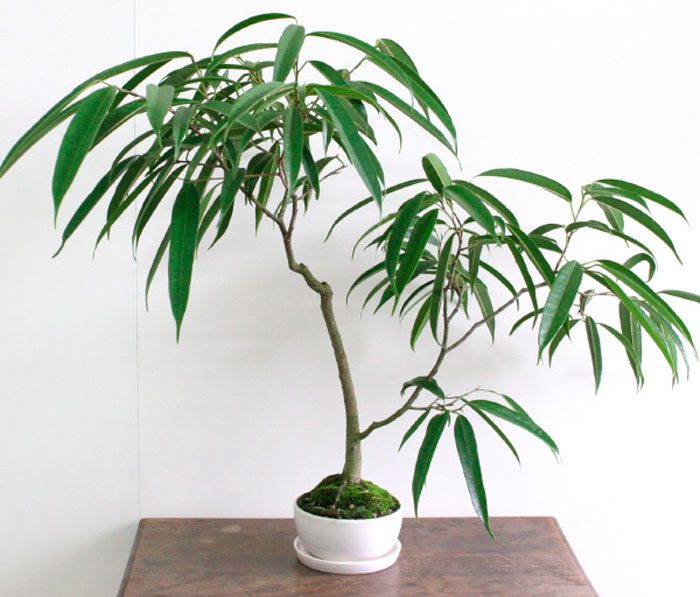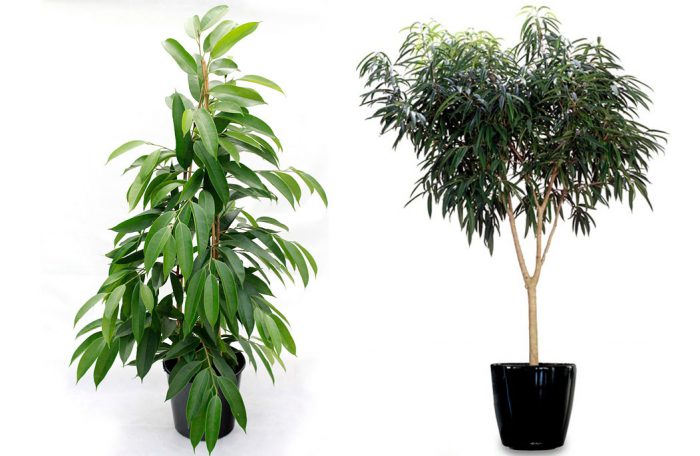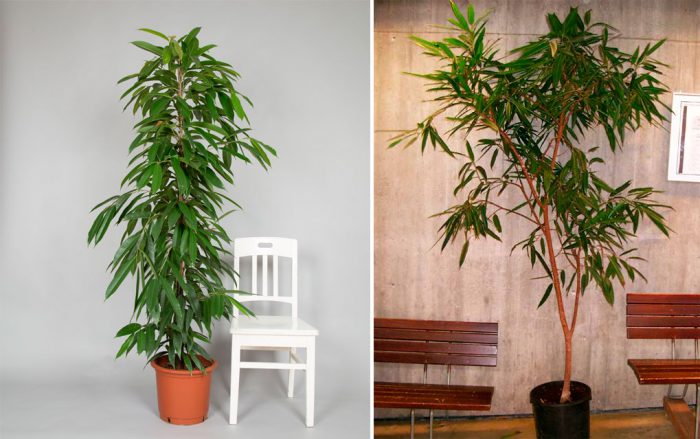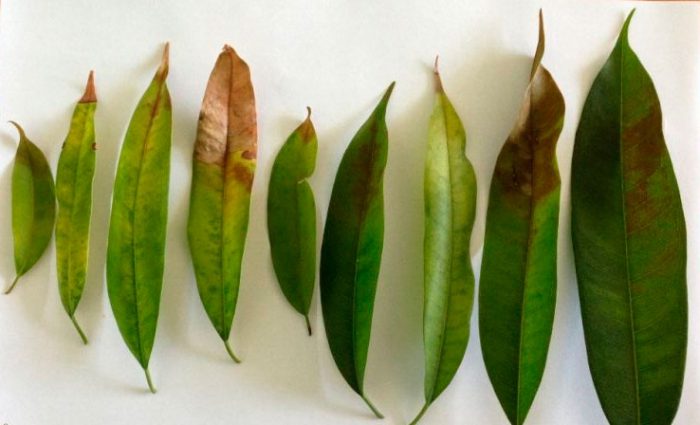Ficus Ali also called ficus benedict and it is a species that is quite common in home floriculture. In nature, it can be found in Southeast Asia. And this plant was named so, in honor of the person who first discovered this species and his name is Simon Benedict.
There are several varieties of this plant. Their appearance is somewhat unusual for ficuses. Ficus Ali is quite unpretentious and undemanding to care for.
Content
Description of ficus ali
In nature, this evergreen plant reaches a height of 15–20 meters. It resembles a tree, as it has an even and fairly long trunk. It is covered with bark, which in adult specimens has a dark shade. On its surface there are stains of a pale shade.
Narrow belt-like leaves have sharp edges at the tips. The branches of this ficus are drooping.
The color of the foliage is directly dependent on the plant variety, as well as on its habitat. It can be plain or variegated. In length, the leaves can reach 30 centimeters, and in width from 5 to 7 centimeters.
The leaf has a striking streak that runs along it. In different directions from the central vein, side veins diverge, which are not so clearly visible. And also the central vein bends the leaf in half, as if breaking it.
Home care for ficus ali
Illumination
This is a fairly light-loving plant that requires bright, but diffused light. Variegated forms especially need good lighting. And forms with monochromatic leaves feel quite well in partial shade conditions. It is recommended to place it near an east or south-east orientation window. It is necessary to protect the ficus from the draft. He can react extremely negatively to a change in lighting or climate.
Temperature regime
Quite a thermophilic plant. So, in the warm season, it feels good at temperatures from 22 to 24 degrees. In winter, it is advisable to keep the temperature at 16 degrees. In summer, ficus requires a relatively large amount of light.
A sharp drop in temperature has a negative effect on the plant, especially if the soil temperature in the flower pot drops significantly. Ficus should not be placed next to heaters or air conditioners. He does not like stale air, so the room must be regularly ventilated, but at the same time, be sure to remove the flower away from the draft.
Humidity
Not very picky about air humidity. Feels best in moderate humidity (50 to 70 percent). If the room is hot, which often happens in the summer, then the foliage must be regularly sprayed without fail. For this purpose, lukewarm, well-settled water is suitable. It is also required to humidify the air in the room.
Earth mix
You can buy ready-made earthen mixture for palm trees or ficuses in a special store. You can also cook it yourself.
Option 1: mix turf, peat and sand in equal parts.
Option 2: for an adult specimen, it is necessary to combine leaf and sod land, sand, peat and humus, which should be taken in a ratio of 2: 2: 1: 1: 1.
Option 3: also for adult plants, a soil mixture is suitable, consisting of leaf and sod land, sand and peat, taken in equal proportions.
How to water
Water after the top layer dries a couple of centimeters in depth. If the land is crumbly, then the ficus needs watering. Water from the sump must be removed in time, otherwise the root system will begin to rot.
Fertilizer
They are fed in the spring-summer period once every 2 weeks. For this, organic and mineral fertilizers are used, while they should be alternated. In winter, fertilizers are not applied to the soil. Fertilizers should be applied only to the soil; they cannot be sprayed with the plant. It is also recommended to dissolve the nutrients necessary for ficuses in water for irrigation, which can be bought at a flower shop.
Transplant features
Transplanted as needed, for example, when the root system ceases to fit in the pot. When transplanting, the pot is taken slightly larger than the previous one. At the same time, young plants are transplanted once a year, and adult specimens (4–5 years old) - 2 times a year.
Only part of the new earth is poured into the pot, and the remaining space is filled with old. For mature plants, the use of fresh soil is optional. In large ficuses, it is recommended to replace the top layer of the substrate once a year. This should be done during periods of intense growth (spring and summer).
Reproduction methods
You can propagate it by cuttings that take root quite easily. The stem cutting is cut in the spring and summer. Water is used for rooting. Place the cutting in a slightly shaded area. The temperature should be kept between 20 and 25 degrees.
In the heat, it is necessary to systematically humidify the air. As a rule, after 3 weeks the cutting takes root and is planted in the soil.
Diseases
The plant is quite resistant to diseases and harmful insects very rarely settle on it. In the event that you take care of the plant, observing all the rules, then it will not get sick.
Possible diseases
- Yellowed withered leaves - there is either a lot or little light for the plant.
- Leaves turn black and die off - most likely there are frequent sharp changes in temperature with differences of at least 7 degrees.
- Dark spots or specks appear on the seamy side of foliage Is a fungal disease (cercospora or anthracnose). As a rule, anthracnose appears as a reddish bloom on the trunk. If you do not detect and get rid of this disease in time, then the ficus dies or all the leaves die off.
Pests
Most often settle aphids, mealybugs and scabbards.
Mealybug has a whitish color and a cotton-like structure. Most often it settles on branches and on the basis of leaves. If the plant is watered, whitish lumps can be clearly seen on the soil surface.
Shield has a yellowish color. It settles on leaves and stems and looks like a small tubercle.
Aphid placed closer to the peduncle.
If water stagnates in the soil, this can provoke the appearance of spider mites or millipedes.
If you notice pests on the ficus, then carefully remove them with a damp sponge and give the plant a warm shower.If centipedes or spider mites are introduced, then a complete replacement of the soil will be required. Florists also advise using a solution of water with soap and alcohol. So, for 1 liter of clean water, you need to take 1 large spoonful of alcohol and 1 small spoonful of laundry soap. Everything is thoroughly mixed, and then the affected areas are washed with this mixture with a sponge.
















How does ficus Ali handle postage.? Specifically in the fall of October?